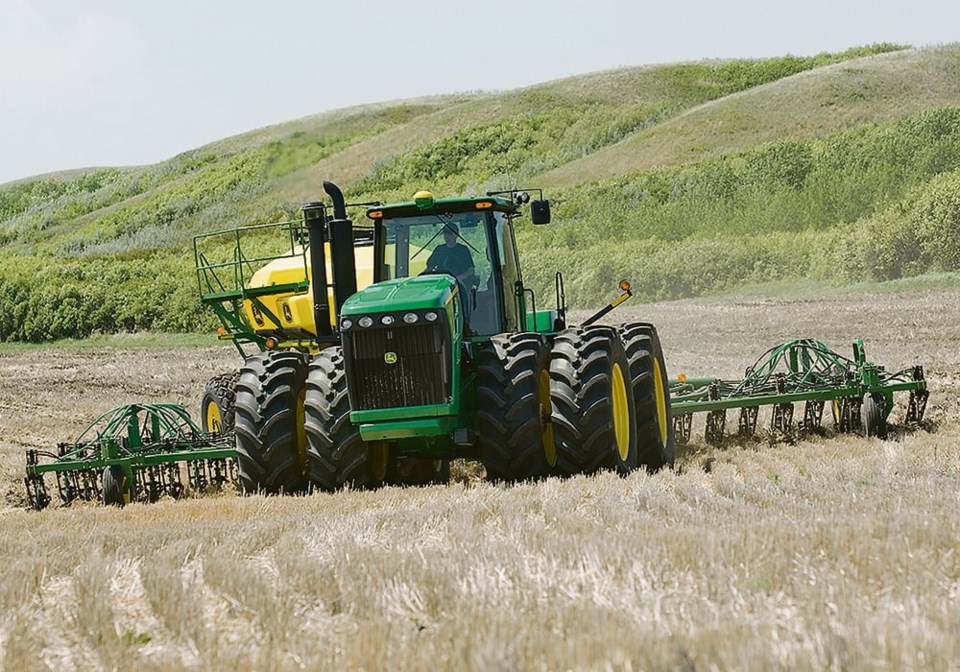The Senate Committee on Agriculture and Forestry visited Saskatchewan and Alberta last month as part of its new study on Canadian soil health. Having engaged in the Senate hearings earlier this year, we gained valuable insights while interacting with senators and other participants.
The study assumes significance coming 39 years since the last (and only) such report was compiled in 1984, which underscored the issue of soil degradation throughout Canada, emphasizing that without intervention, the nation stood to lose a substantial portion of its agricultural capacity.
A great deal has shifted in 40 years. Like every industry, agriculture has also profited from technological innovation. Simultaneously, Canada’s agricultural exports have expanded.
The Senate study couldn’t have come at a better time.
Saskatchewan understood the value of soil health decades ago. Compared to the 1980s, when we faced critical challenges related to our soil conditions, we have come a long way, driven by our commitment to preserving soil health.
Today, Saskatchewan is the breadbasket of Canada because of its fertile soil and contribution to the national and global food supply. The province accounts for 43.1 percent of total cropland in Canada — way more than any other province. Crop production in Saskatchewan has increased manifold in the past decades — up 55 percent to 34.9 million tonnes in 2022.
Saskatchewan has undergone a remarkable soil health revival, largely attributed to the widespread adoption of zero-till practices; as well as regenerative farming practices like cover cropping, intercropping and protecting watersheds.
Zero-till is a conservation-oriented farming practice that involves planting crops without conventional plowing or extensive soil disturbance. By 2016, 93 percent of cropland in Saskatchewan was under conservation tillage.
Saskatchewan’s flat terrain and strong winds make its soil susceptible to erosion. By preserving crop residue on the surface, zero-till acts as a protective barrier against wind and water erosion. This bolsters water infiltration, reduces surface runoff, and enhances moisture retention — critical for healthy soil and robust yields.
Statistics Canada notes that the transition to no-till contributed to reduced summerfallow land use, a practice vital for replenishing soil moisture and controlling weeds in semi-arid regions in the Prairies.
Zero-till plays a crucial role in mitigating climate change by enhancing carbon sequestration in the soil. The Canadian Agri-Food Policy Institute notes: “the adoption of no-till methodology has had a dramatic impact on carbon losses in Western Canada, moving the provinces from a net loss of carbon to a net gain position since 1981.”
Zero-till also minimizes the need for extensive machinery and labour, thus cutting down operational costs and emissions.
Saskatchewan’s journey toward improved soil health conditions stands as a testament to the power of innovation in agriculture, a practice that has now been borrowed by other provinces in Canada and various countries, including those in Europe.
However, it is unfortunate that the pioneers of this practice are not getting due recognition. For instance, Quebec farmers were incentivized to switch to no-till. The initiative saw a 69 percent rise in its adoption between 2009 and 2013. In other parts of the world, farmers can earn via the offset market for the sequestered carbon in soil.
Saskatchewan farmers, on the other hand, do not get any benefits for investing for decades in sustainable practices, neither in terms of tax breaks nor incentives. They are even barred from participating in the booming carbon market.
This is because the federal Greenhouse Gas Offset Credit System announced last year excludes those who embraced no-till farming before Jan 2017 from 小蓝视频 eligible for GHG credits.
Policymakers must recognize the value of early adopters and establish an enabling framework to inspire wider adoption. This will motivate the community to continue their innovation, fostering the widespread embrace of these sustainable practices.
Jason Mann is chief executive officer of CarbonTerra and Rachel Horr is the company’s chief operating officer.
Don't count on social media to deliver your local news to you. Keep your news a touch away by bookmarking The News-Optimist homepage at this link.
Here's why you should bookmark your favourites.
Bookmark SASKTODAY.ca, Saskatchewan's home page, at this link.




